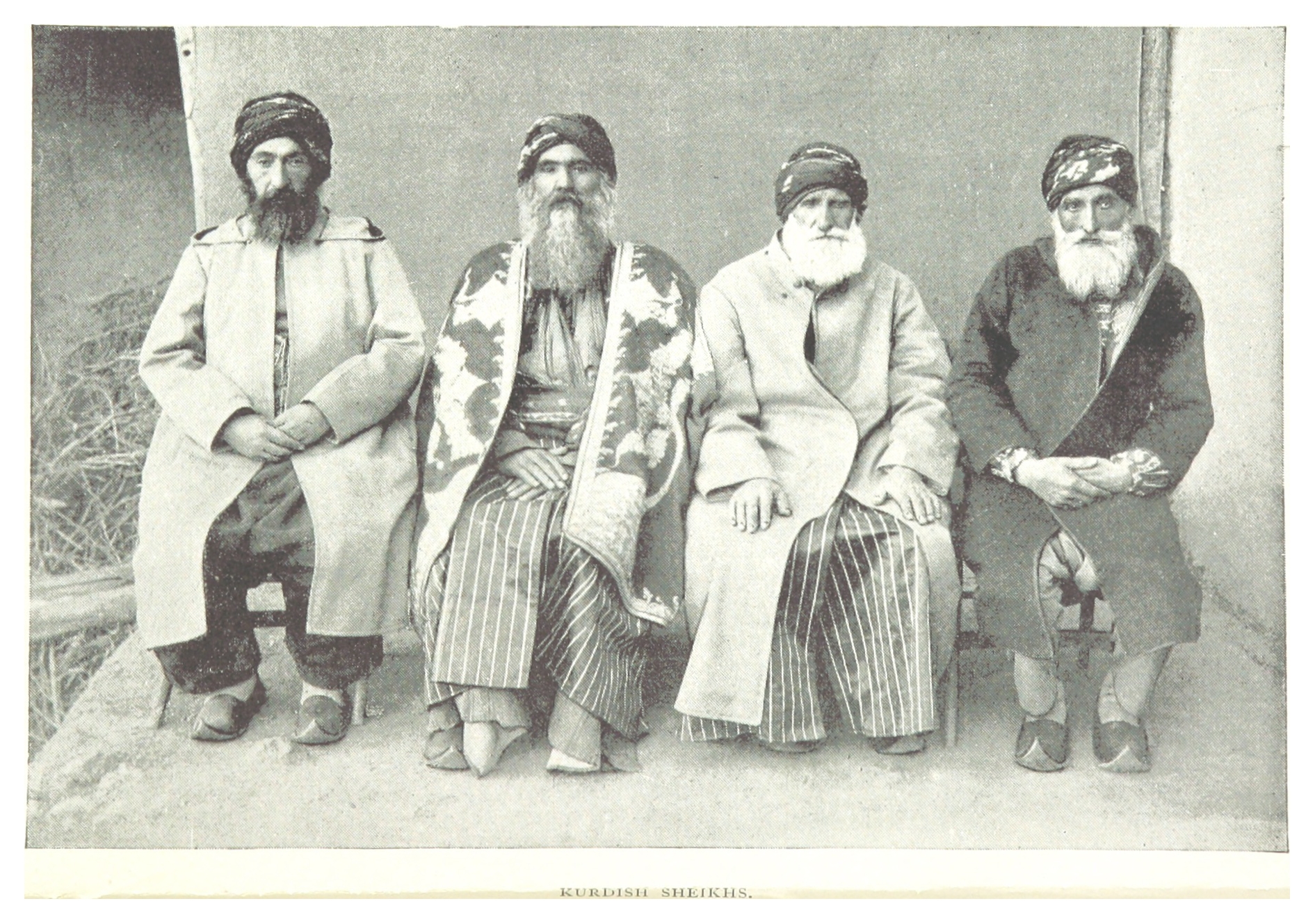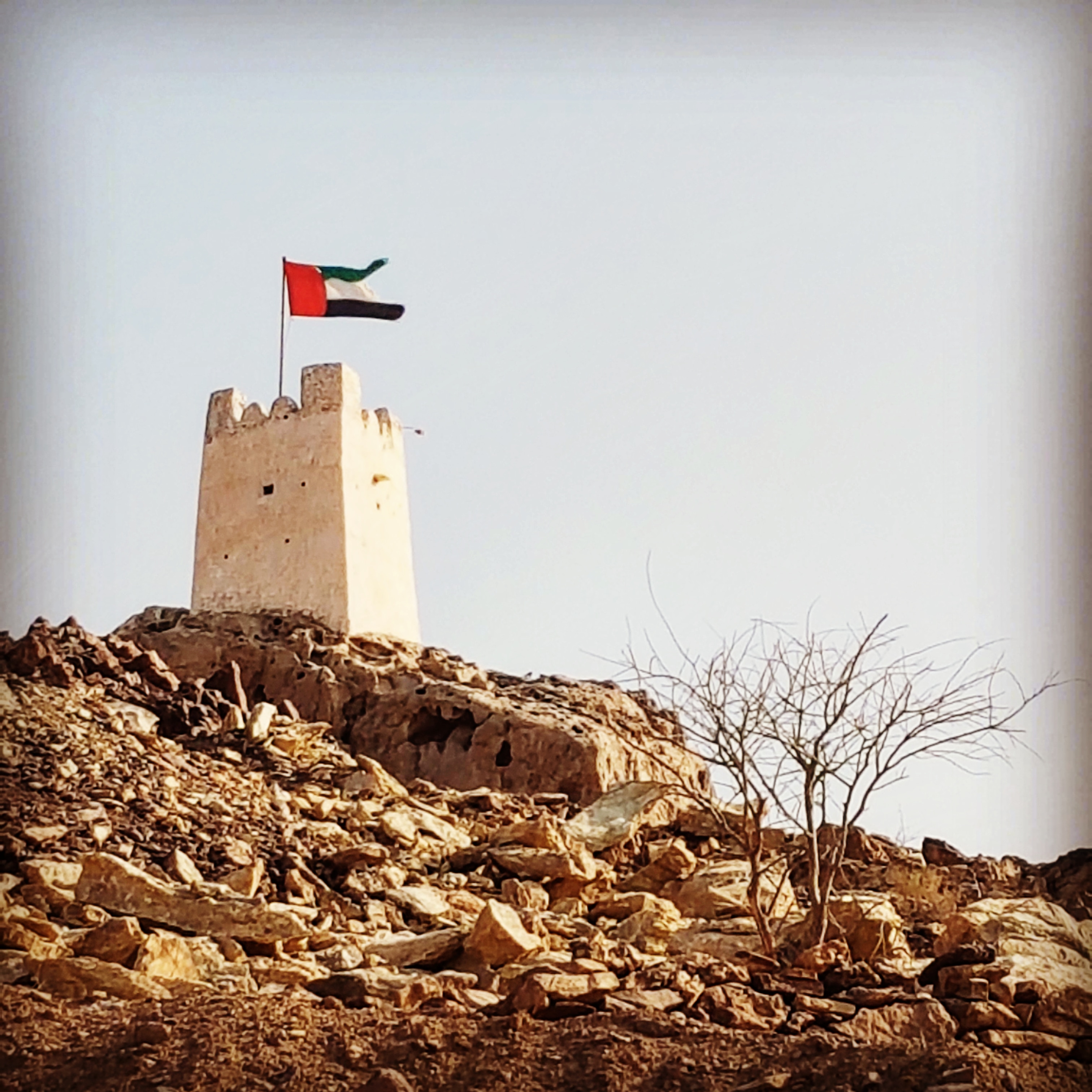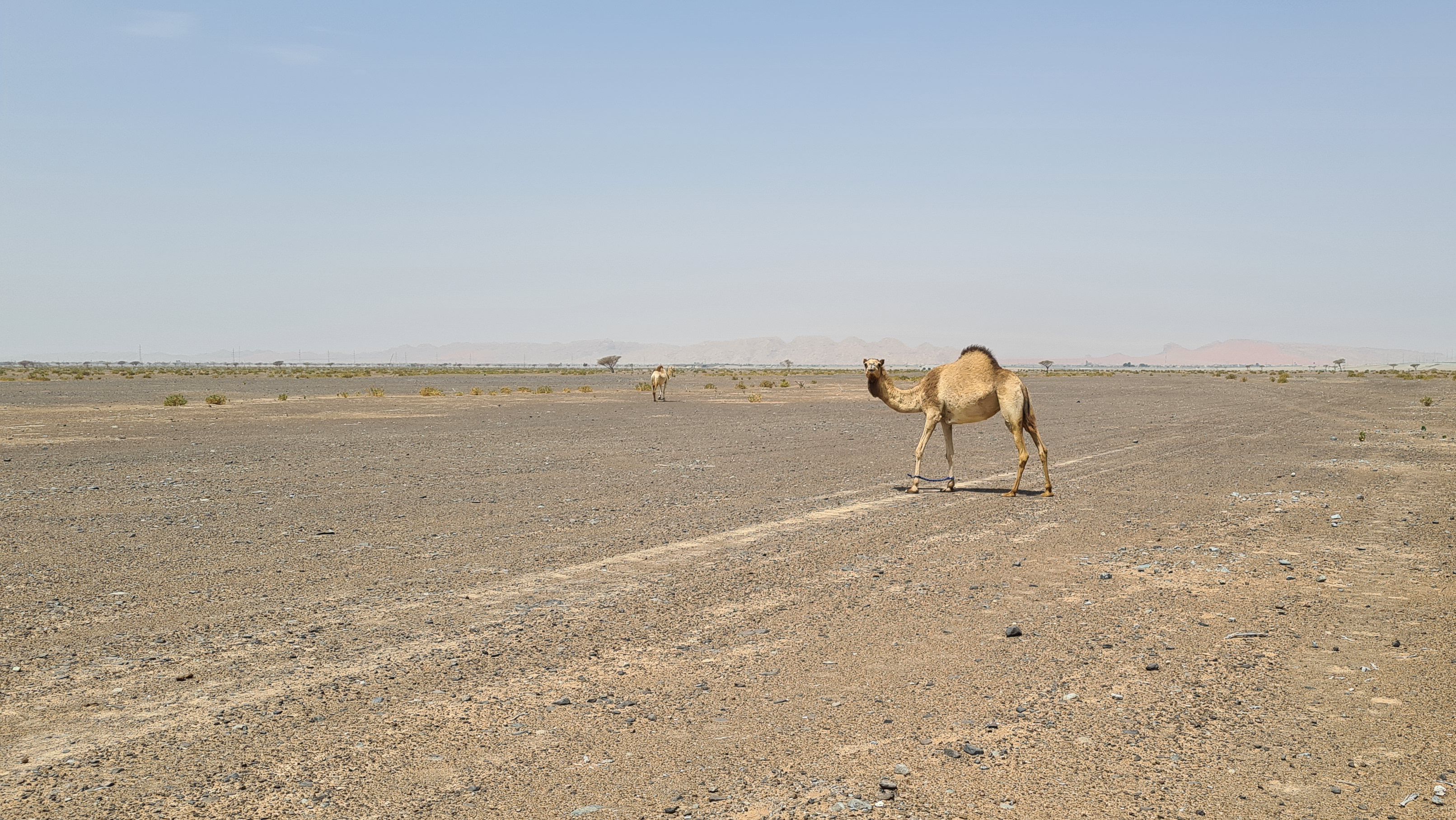|
Maktoum Bin Butti Bin Suhail
Maktoum bin Butti (Arabic: مكتوم بن بطي) bin Suhail Al Maktoum was the joint founder and first ruler of Dubai, today one of the United Arab Emirates, alongside Obeid bin Said bin Rashid, with whom he led a migration of the Al Bu Falasah from Abu Dhabi, seceding from the Bani Yas. Maktoum was the founder of the Al Maktoum dynasty. He was a signatory to the 1843 Maritime Truce, the precursor to the Perpetual Maritime Truce of 1853, as well as the 1847 treaty to abolish the slave trade. Migration Dubai is thought to have first been established as a fishing village on the Trucial Coast in the early 18th century. It was then a tributary to the Bani Yas tribe of Abu Dhabi. By 1820, the town was ruled on Abu Dhabi Sheikh Tahnun bin Shakhbut Al Nahyan's behalf by a regent, when the General Maritime Treaty of 1820 was signed between the sheikhs of the South Eastern Persian Gulf coast and the British. The regent, Saeed bin Saif bin Zaal, signed the treaty on behalf of his ... [...More Info...] [...Related Items...] OR: [Wikipedia] [Google] [Baidu] |
Sheikh
Sheikh ( , , , , ''shuyūkh'' ) is an honorific title in the Arabic language, literally meaning "elder (administrative title), elder". It commonly designates a tribal chief or a Muslim ulama, scholar. Though this title generally refers to men, there are also a small number of female sheikhs in history. The title ''Syeikha'' or ''Sheikha'' generally refers to women. In some countries, it is given as a surname to those of great knowledge in religious affairs, by a prestigious religious leader from a silsila, chain of Sufi scholars. The word is mentioned in the Qur'an in three places: verse 72 of Hud (surah), Hud, 78 of Yusuf (surah), Yusuf, and 23 of al-Qasas. A royal family member of the United Arab Emirates and some other Arab countries, also has this title, since the ruler of each emirate is also the sheikh of their tribe. Etymology and meaning The word in Arabic stems from a Semitic root, triliteral root connected with aging: , ''shīn-yā'-khā. The title carries the me ... [...More Info...] [...Related Items...] OR: [Wikipedia] [Google] [Baidu] |
Dubai Museum
Dubai Museum () is the main museum in Dubai, United Arab Emirates. It is located in the Al Fahidi Fort (), built in 1787 and is the oldest existing building in Dubai. The museum was opened by the Ruler of Dubai in 1971, with the aim of presenting the traditional way of life in the Emirate of Dubai. When entering, one can see the fort constructed and the various displays that go along with it. From the fort, there is a path to the galleries, which display the general culture of the land, especially in the 1800s. It includes local antiques as well as artifacts from African and Asian countries that traded with Dubai. It also includes several dioramas showing life in the emirate before the advent of oil, in addition to artifacts from recent discoveries as old as 3000 BC. The museum has displayed from pearl diving boats to swords and jewellery and a lovely close-to-life spice souk, which filled with real smells and actual spices. Besides the displays, the museum also includes holo ... [...More Info...] [...Related Items...] OR: [Wikipedia] [Google] [Baidu] |
Al-Buraimi
Al Buraimi () is an oasis city and a ''wilayah'' (province) in northern Oman, on the border with the U.A.E. It is the capital of Al Buraimi Governorate and is located approximately from the national capital Muscat. It is bordered by the U.A.E. city of Al Ain, and the wilayas Mahdah and Dhank. Al-Buraimi has taken the motto of Al-Khandaq Fort (the Trench Fort). It includes several important historical landmarks, such as forts and heritage houses. One of the prominent ones is the "Bayt Bahr" (House of the Sea). Among its castles are Al Fayd-Hafit Castle and Wadi Al Jizi Castle. Within the province, there are some villages, including around 49 '' aflaj'' indigenous water management structures, in addition to extensive sandy deserts. Al Buraimi Governorate serves as a major commercial market, where goods and commodities from neighboring governorates are received. A large market is held there to showcase various necessities. History The governorate stands out as a unique and ... [...More Info...] [...Related Items...] OR: [Wikipedia] [Google] [Baidu] |
Na'im
The Na'im () (singular Al Nuaimi ) are an Arab tribe in the United Arab Emirates. The tribe is also present in other gulf countries. The Na'im are divided into three sections, the Al Bu Kharaiban, the Khawatir and the Al Bu Shamis (singular Al Shamsi). It is from the former section that the current Rulers of the Emirate of Ajman are drawn. Al Bu Shamis has become virtually independent and is closely associated with the Al Bu Falasa of Dubai. The traditional heart of Na'im territory was the oasis town of Buraimi and nearby Al Ain, where Na'im expansion came at the expense of the Dhawahir tribe, but also rubbed up against the Bani Yas and the allied Manasir. Although the Na'im were linked to the growing Wahhabi influence in the Buraimi area and adopted the doctrine, they allied with other forces to evict the Wahhabis from Buraimi in 1871 and subsequently occupied many of the forts around Buraimi. However, following the death of Zayed the Great, the Na'im once again came un ... [...More Info...] [...Related Items...] OR: [Wikipedia] [Google] [Baidu] |
Ghafalah
The Ghafalah (singular Al Ghafli) is an Arab tribe of the United Arab Emirates (UAE). Origins An entirely Bedouin tribe at the turn of the 20th century, the Ghafalah roamed the Jiri Plain inland of Ras Al Khaimah and particularly Umm Al Quwain, but did not extend their ''dar,'' or roaming territory, into the Hajar Mountains or even their foothills. At the time numbering some 500 in strength, by 1968 their numbers had dwindled to 197 people living in the five northern Emirates. A Ghafiri tribe, the Ghafalah were close to the Al Nahyan of Abu Dhabi and often supported them in conflict. They claimed precedence over a number of wells inland, often sharing these with the Khawatir. They subsisted mainly by selling firewood and charcoal in the coastal towns, and by the produce of their 700 camels, 1,000 sheep and goats as well as cattle and donkeys. They also carried goods such as dates across inland routes to service coastal traders. The Ghafalah were one of a number of tribes opp ... [...More Info...] [...Related Items...] OR: [Wikipedia] [Google] [Baidu] |
Bani Qitab
The Bani Qitab (Singular ''Al Qetbi'', ) is an Arab tribe of the United Arab Emirates (UAE) and Oman. The singular form of the name, ''Al Ketbi'', is a common family name in the Northern UAE today. Consisting of a settled southern section and a nomadic northern section, the tribe was long influential in the conduct of affairs in the interior of the Trucial States. The Northern branch mostly settled in the inland towns of Dhaid and Al Falayah. Settlement The tribe consisted, at the turn of the 19th century, of some 2,100 nomadic Bedouin (of whom some 600 were fighting men) and 2,700 settled people. The Bedouin ''dar'', or district, of the Bani Qitab stretched from South of the Buraimi oasis to the Eastern foothills of the Hajar Mountains, the Jiri plain to the North of Sharjah and the fertile area around Sharjah's inland oasis town of Dhaid. The Southern Bani Qitab, some 500 households, settled around the village of Aflaj Bani Qitab in the Dhahirah area. Over time these sepa ... [...More Info...] [...Related Items...] OR: [Wikipedia] [Google] [Baidu] |
Al Khan
Al Khan is a southern suburb of the city of Sharjah, United Arab Emirates. The suburb is located on the Al Khan Bay, which serves as a boundary between Sharjah and Dubai. Until recently, the area was deserted and home to a collection of crumbling traditional coral and adobe houses, but it now houses the Sharjah Aquarium. A number of the older buildings are being restored to create a heritage area. History Around the start of the 20th century, Al Khan was administered by a tribal ruler and consisted of some 75 pearling boats and a settlement containing families of the Al Bu Mahair, Mazari and Manasir tribes. A British man-of-war was called to the area in 1917 following an argument between the ruler of Sharjah and the headman of Al Khan, Muhammad bin Ubaid bin Jarash, over absconding debtors from other pearling communities taking refuge in the township. The uneasy relations between Al Khan and Sharjah continued until after 1934, when the Ruler of Sharjah appointed his brother, Mo ... [...More Info...] [...Related Items...] OR: [Wikipedia] [Google] [Baidu] |
Jumeirah
Jumeirah ( Emirati pronunciation: ) is a coastal residential area of Dubai, United Arab Emirates mainly comprising low rise private dwellings and hotel developments. It has both expensive and large detached properties as well as more modest town houses built in a variety of architectural styles. The area is popular with expatriates working in the emirate and is familiar to many tourists visiting Dubai. History Archaeological excavations at Jumeirah Archaeological Site, which was discovered in 1969, demonstrate that the area was inhabited as far back as the Abbasid era, approximately in the 10th century CE. Measuring about , the site lay along a caravan route linking India and China to Oman and Iraq. Historically, Emirati people living in Jumeirah were fishermen, pearl divers and traders. At the turn of the 20th century, it was a village of some 45 areesh (palm leaf) huts, inhabited mainly by settled Bedouin of the Bani Yas and Manasir tribes. At the time, Jumeirah was 'a ... [...More Info...] [...Related Items...] OR: [Wikipedia] [Google] [Baidu] |
Deira, Dubai
Deira () is a historically significant district within the U.A.E. city of Dubai. It is located at the northern end of Dubai Creek. History Deira is one of the oldest and most established areas of Dubai. Its origin dates back to the mid-1700s, it developed along the canal called Dubai Creek, this salt-water canal separates Deira from Bur Dubai. The canal enabled the area to develop its importance. It facilitated the sea trade, which is still operational today. With the help of these traditional dhow boats, hundreds of tons of goods are still loaded and unloaded on the canal docks every day. In 1841, a smallpox epidemic broke out in the district of Bur Dubai, forcing residents to relocate east to Deira. In 1896, a fire broke out alongside Dubai Creek, a disastrous occurrence in a town where many family homes were still constructed from ''barasti'' – palm fronds. The conflagration consumed half the houses of Bur Dubai, while the district of Deira was said to have been total ... [...More Info...] [...Related Items...] OR: [Wikipedia] [Google] [Baidu] |
Al Bu Muhair
The Al Bu Muhair (singular Al Muhairi or Al Mheiri or Al Mehairi) are a tribe of the United Arab Emirates (UAE), closely associated with the Bani Yas of Abu Dhabi but settled throughout the western coastal areas of the Emirates. At the turn of the 20th century, the Al Bu Muhair were mostly settled, with a minority of some 20 households in Abu Dhabi still following a Bedouin lifestyle. At the time, some 500 Muhair were settled in Abu Dhabi, with another 500 members of the tribe living in Al Bateen. The Bateen settlement and its associated creek, Khor Al Bateen, were south of Al Maqta and consisted of some 130 ''areesh'' houses made of ''barasti'', or date branches. Of these, 30 houses, some 150 people, were members of the Sudan tribe and another 100 Muhair. Elsewhere on the coast, the Al Bu Muhair were found in Dubai (400 houses); Al Khan (60 houses); Sharjah (60 houses); Ajman (80 houses); Umm Al Quwain (30 houses) and 120 houses in Ras Al Khaimah. Walker, in 1901, disagrees with ... [...More Info...] [...Related Items...] OR: [Wikipedia] [Google] [Baidu] |
Abdullah Bin Rashid Al Mualla
Sheikh Abdullah bin Rashid Al Mualla was the Ruler of Umm Al Quwain from 1820 to 1853. The head of the Al Ali tribe, he was signatory to both the 1820 General Maritime Treaty with the British and the 1853 Perpetual Maritime Truce, making Umm Al Quwain a Trucial State. Today it is one of the seven United Arab Emirates (UAE). His predecessor was Sheikh Rashid bin Majid Al Mualla, who originally established the fortification at Umm Al Quwain, when the Al Ali tribe moved onshore from their previous location on Sinniyah Island. Reign Relatively little is recorded regarding the reign of Abdullah bin Rashid and most contemporary sources date his rule by default to 1820 as he was a signatory to the General Maritime Treaty of 1820 following the British punitive expedition from Bombay against the Al Qasimi at Ras Al Khaimah. In 1819, that force bombarded the coastal settlements of the Gulf Peninsula, leading to the capitulation of the coastal Sheikhs and the signing of the tre ... [...More Info...] [...Related Items...] OR: [Wikipedia] [Google] [Baidu] |
Ras Al Khaimah
Ras Al Khaimah (; ), often referred to its initials RAK, is the largest city and capital of the Emirate of Ras Al Khaimah in the U.A.E. The city had a population of 191,753 in 2025, and is the sixth-most populous city in UAE after Dubai, Abu Dhabi, Sharjah, Al Ain and Ajman. The city is divided by a creek into two parts: old town in the west and Al Nakheel in the east. The town is the successor to the Islamic era port and trading hub of Julfar. Etymology ''Ras Al Khaimah'' translates to "Headland of the Tent". ''Khaimah'' () means 'Tent', but also refers to the palm frond houses or ''areesh'' that were common in the area. History Antiquity Ras Al Khaimah has been the site of continuous human habitation for 7,000 years, with archaeological finds dating back to the Neolithic. The northern area of the city today known as Ras Al Khaimah was previously the location of the important Islamic era settlement and port of Julfar. Archaeological evidence has demonstrated that Julf ... [...More Info...] [...Related Items...] OR: [Wikipedia] [Google] [Baidu] |







